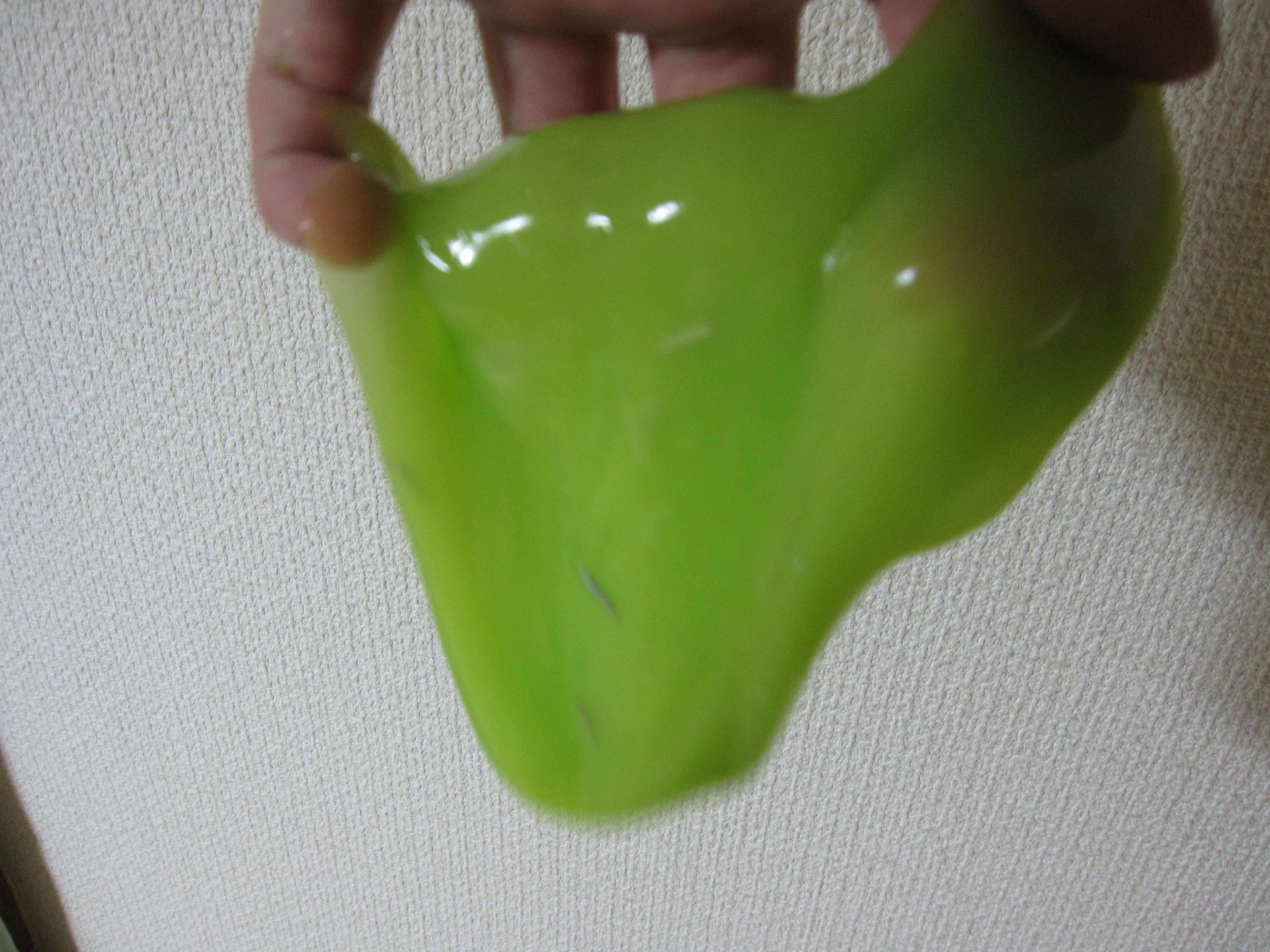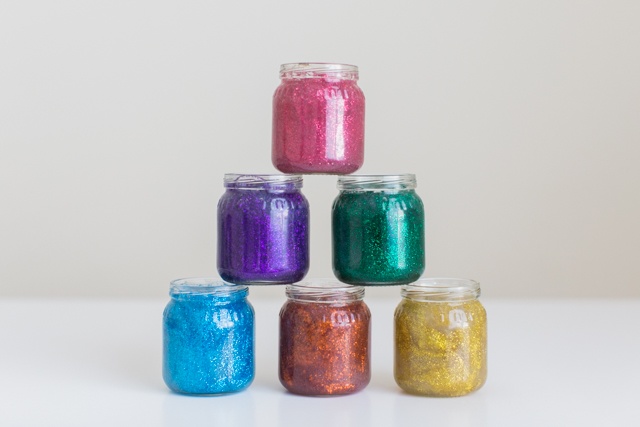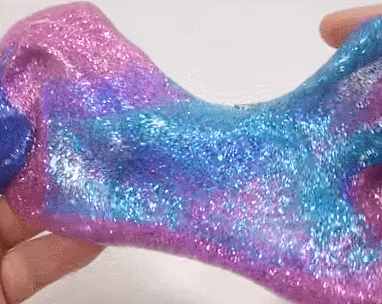There has been a run on glue lately, which, in addition to explaining why it’s been so quiet at the horse stables, led us to a strange answer: glue is selling out because droves of young people are using it and other household goods to make slime, the hottest trend of 2017 this side of the fidget spinner.
Unless you have children, chances are you haven’t heard of slime. That’s because, though dominating teens’ daily lives, the fad has been almost imperceptible to everybody else. In all honesty, this humble blogger only stumbled upon it after two of his favorite sports podcasters diverged into a discussion of their many missing grooming products, all victim to their children’s slime projects. And yet millions of dollars are changing hands as teens and preteens produce and sell slime, and create videos of them massaging and otherwise manipulating it.
None of this makes sense, right? (Whatever you do, don’t say, “I don’t know.”) Well, that’s what we’re here for: to break down market research trends as they come. As far as we can tell there are five questions we need to explore here: 1) What is slime? 2) Who makes it? 3) Who makes money off it? 4) Why in the heck are kids so obsessed with it? And, finally, 5) Does it pose any dangers to children or brands?
Ok, What is Slime?
Easy part first. Slime is a stretchy, gooey, non-sticky substance children and teenagers are making at home, using glue and common household products. They experiment with color combinations, textures, and different formulas, and then post videos of themselves playing with it…and…that’s it.
While the DIY and performative aspects are new, the substance itself is just the latest iteration of hand-held putty, which started in the 1950s with Silly Putty, continued through the seventies with Mattel’s Slime, took on cartoon variations with TMNT and Ghostbuster themed products in the 80s, and through the 90s with Nickelodeon fame.
The science behind it is now the same it was then—no need to get into it, so go here if you like—but at its core it combines one bottle of glue and a smattering of other common household products like shaving cream, contact solution, and hand lotion.
Fine, but Who Makes Slime?
Yet there is something very different about this version of slime mania: the slime is made by and for the children and adolescents obsessed with it (as opposed to toy or entertainment manufacturers), and they are, for the most part, teenage girls.
Whereas slimes of the past were male-driven gross out toys, today’s slime is glittery, flowery, and aesthetically pleasing. Much of it looks like one of those Unicorn Frappuccinos that were a thing a few months ago. We are not into hard gender roles here, but this seems to be a more feminine side of slime, more akin to Tinkerbell than a swamp monster. And it’s making some of the young women producing it into bonafide internet celebrities and entrepreneurs.
Glitter.slimes, for example, started as a hobby for a teenager named Nicollete and has now become a full time slime maker, packager, and poster, operating with a staff of six. Karina Garcia’s YouTube channel has 5 million subscribers and she has even written a bestselling book about slime. She is still in her teens.
And again, all this postmodern slime —part science experiment, part stress ball, part art exhibition—is made, publicized, and purchased almost entirely by young and teenage girls, operating in a youth-driven, online economy and art community.

But Who makes MONEY off of Slime?
Just because slime is purchased, sold, and traded person-to-person online, however, doesn’t mean that manufacturers aren’t getting in on the fun. Excluded from selling the finished product—the DIY nature of slime is its raison d’etre, so no corporate slime, please! —manufacturers are instead finding some success selling its constituent ingredients.
Elmer’s Glue more than doubled its sales last December in the earliest stages of slime fever (sounds like what whiped out Jamestown). This makes sense since most slime recipes use an entire bottle of Elmer’s as a base. In related news, their parent company, Newell, has also ramped up factory production to meet the demand, and dedicated teams of researchers to concocting new slime recipes, noting “Demand in glue is up significantly since the slime trend took off.”
Michael’s craft stores also started to cash in on the trend in January, establishing an entire slime section in their stores, and also holding in-house slime making events to draw foot traffic and further feed the craze. With nearly everything a potential slime ingredient, manufactures could have a field day courting this fad, right? Not exactly—more to come on that later. But first, we have to figure out why kids actually love the stuff to begin with.
Ok, So Why Do Kids Love Slime?
What the heck, right? That’s what we wanted to know too. How is this a thing?
Sure, we all indulged in some super fads through our youth—Simon, Furbys, and that laughing Elmo doll all come to mind. But these holiday sensations of yesteryear were the result of carefully crafted product and marketing strategies. Slime is just a bunch of kids doing DIY at home science experiments and playing with the results on camera. Or even more passively, just watching slime videos and not getting their hands dirty. So again we ask, what the heck’s the point?
Of course, we were not the first to ask. Entire reddit and Quora pages already exist trying to explain the fad to bewildered grownups, and the general consensus seems to be, “[shrug] Kids are silly.” But this whole “kids, am I right?!” doesn’t quite satisfy us. So, what is actually driving this trend?
The truth is, many of the teens and preteens at the forefront of the slime sensation simply don’t know. While they may talk about how it helps them “express” themselves and how they particularly like a sound it makes when kneaded, even slime’s most ardent devotees cannot seem to pinpoint what, exactly, is driving it. Indeed, in an in-depth investigation, New York Magazine found explanations wanting, noting, “None of the teen creators I spoke with could enunciate exactly what it was about slime that appealed to them.”
That doesn’t mean that there aren’t theories though. One popular theory has to do with noise. The splooching, buzzing, and other onomatopoeias slime makes may actually trigger ASMR—auto-sensory meridian responses—the calm, goosebumps-ridden state some people experience in response to whispering, paper rustling, and a whole other assortment of activities found on infinite YouTube channels. But surely goosebumps alone cannot explain this.
One art therapist believes she can fill in some more blanks, and that it has to do with technology and alienation. “What’s changing nowadays is that kids are spending more time with screens, so they are getting an excessive amount of one type of sensory input, which is the smooth rubbing of a finger on a screen or keyboard,” Nadia Jenefsky says. “Children in general are getting less sensory and tactile input from playing outside and picking up sticks or making patty cakes out of mud. Slime has come in to take the place of those activities that we are less inclined to do because we don’t want to make a mess or can’t go out in nature as much.”
So children are seeking out sensory experiences by exploring different combinations of common household items, holding it all together with glue, making videos and inducing the willies throughout, and in the process are driving particular manufacturers and retailers’ profits. Sounds good, but brands should be cautious before stepping into the slime pool.

Is Slime Dangerous? To Children? To Brands? What the Market Research Says
Brands should be cautious because, as with anything involving children, some people have already hit the panic button. Original slime recipes—crafted during the uncontained and experimental wild west period of slime history—called for borax, a common household cleaner that triggers the desired chemical reactions, but can also be terribly caustic for children’s skin and airways. Some parents reported children suffering from chemical burns, which is one of the main reasons Elmer’s is now pushing a “non-toxic” and “child-friendly” slime recipe.
Beyond concerns specific to borax, there is the more general note that, while experimenting as mini citizen scientists is great—excellent really: watch less TV!—the idea of children throwing in a little bit of this and a little bit of that is frightening when you think about it. Murphy’s law alone tells us that some meltdown is imminent: who knows how long it will be before a curious child inadvertently combines bleach and ammonia, or something of the kind.
That fear in particular is why, according to marketer James Walker, “Brands should think carefully before they try to capitalize on the slime trend.” Sure, if you are in the glue business, attack this trend for all it’s worth. But makers of household cleaners and grooming supplies really should sit this one out—why venture into off-label product uses that could ultimately result in disaster. Nobody wants to see a burned kid under a newspaper headline that includes their brand name.
So, our advice to every brand not making or selling glue is to sit this trend out—leave it to the kids, they know what they want and any action on your side would feel inauthentic and misplaced. Don’t try to step into a trend if you don’t know where your foot is going to land. That’s not a goldmine you are stepping into, it’s a slime trap.
On the bright side, if parenting blogs are to be believed, kids are already doing the heavy lifting for many manufacturers, appropriating their parents’ products much to their chagrin. Mom’s new $50/bottle luxury lotion that smells like lavenders and lollipops? Gone into Sammy’s Slime. Dad’s contact solution and shaving gel? Gone too.
Such thieveries are, as far as we can tell, the only way manufacturers are getting a slime bump.


